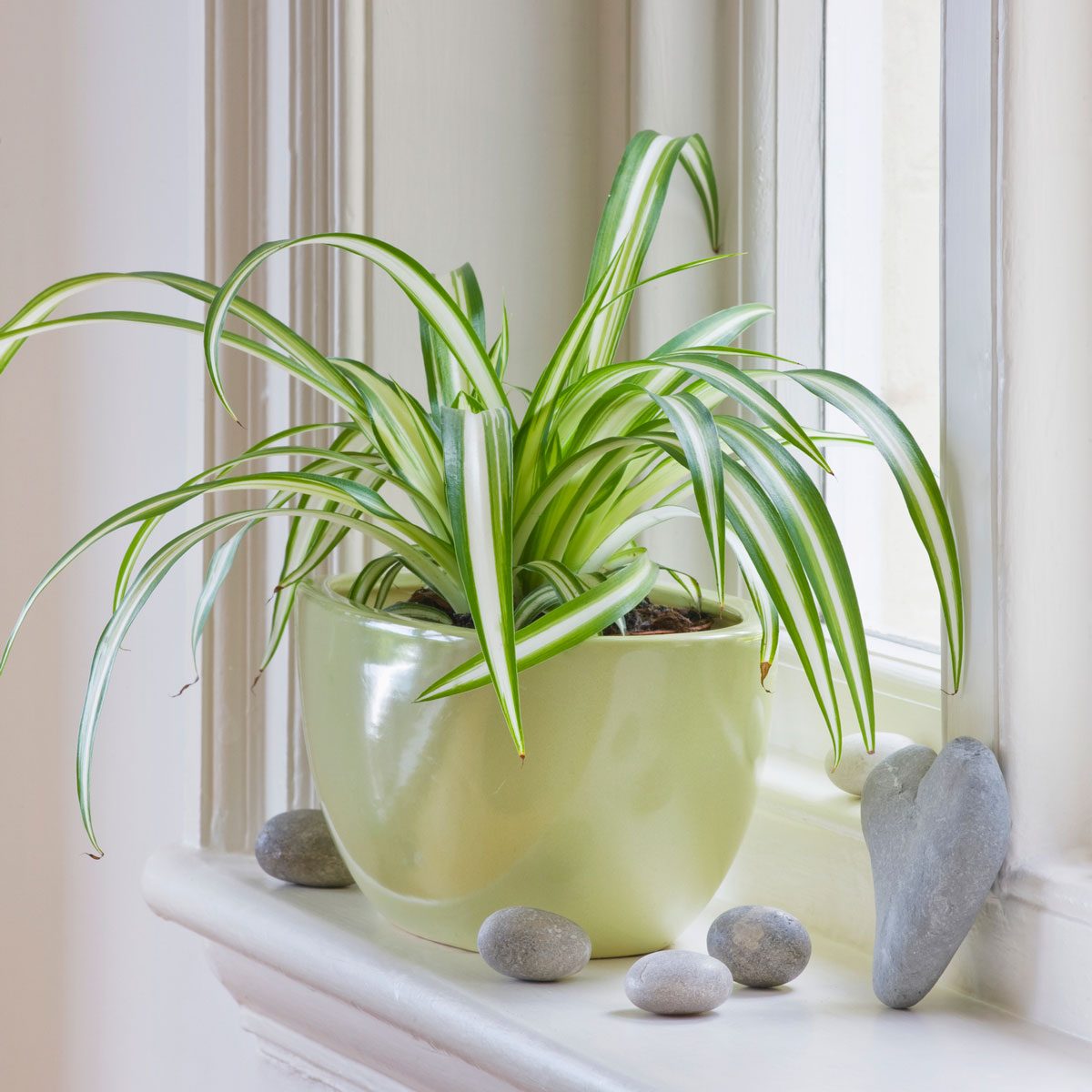This popular houseplant is easy to grow! Learn spider plant light requirements, watering needs, and how to propagate its "babies."

Spider Plant Care and Growing Tips

On This Page
Grow a Spider Plant as a Houseplant

- Common name: Spider plant, spider ivy, ribbon plant
- Scientific name: Chlorophytum comosum
- Light needs: Medium sun to bright light, can tolerate low light (avoid direct sunlight)
- Water needs: Water thoroughly when the top few inches begins to dry
- Soil type: Well-draining moist potting mix
- Size: 12 to 15 inches tall, 1 to 2 feet wide, up to 3 feet trailing stems
- Hardiness zones: 9 to 11, can be grown as an annual in colder regions or as a houseplant
“Spider plant is a popular houseplant choice because it’s easy to care for, thrives in various lighting conditions, and is highly resilient and dependable,” says Paris Lalicata, head of plant education and community at The Sill. “It’s also prized for its appearance, due to its graceful, arching leaves that showcase a vibrant green with striking white or yellow variegation, and its cascading “baby” offshoots which add dynamic movement and charm to any space.”
Spider Plant Benefits
As a houseplant, spider plant is pretty easygoing, as long as you provide for its basic needs. It’s especially terrific in a hanging pot, where its cascading leaves put on a great show.
Help it thrive with the right light conditions, regular watering, and well-draining soil. Another benefit? This plant is considered non-toxic, making it safe for homes with pets or small children.
Spider Plant Light Conditions
One of the most important considerations is light exposure. “While spider plant is versatile and can tolerate some lower light, they grow healthier and faster under bright light conditions,” Paris advises, noting that it’s important to avoid direct sun.
She recommends placing your plant in an east or west facing window with little direct sunlight, or even a north window if the plant has a clear, unobstructed view of the sky. Southern exposures can work if you diffuse any direct afternoon sun with a sheer curtain.
When to Water a Spider Plant
Spider plants grow well in a basic potting soil mix. They like regularly moist soil, but not overly wet conditions. Be sure your pot offers good drainage, and water deeply once a week or so when the top few inches of the soil feel dry.
As a native of the tropics (tropical Africa), this plant prefers warm temperatures and at least a moderate level of air humidity. “It can tolerate low humidity, but higher humidity will make it happier,” Paris notes. “Avoid keeping it in rooms that are very hot and dry, or in front of drafts from heating units.” Provide a little extra humidity by setting it on a shallow dish of pebbles elevated above water, and protect it from very cold temperatures by moving it away from windows on frigid nights.
Spider Plant Brown Tips
Though these are some of the easiest of all houseplants, there are a few issues to watch for. If you notice brown dried edges or tips on the leaves, check your water source. Chlorinated water can cause leaf tip burn. Switch to purified water or rainwater, and things should improve.
Pests on Spider Plants
Like all houseplants, this one can be affected by mealybugs, scale, and other common pests. Treat these using horticultural oil or insecticidal soap, following the directions on the container.
Spider Plant Flowering

Under the right conditions, spider plant not only flowers, but creates lots of new little plantlets! This plant flowers in the winter months, when the days are short and nights are long.
This plant usually flowers when the days are short and nights are long for at least three weeks, but flowers may appear anytime of the year.
As it prepares to flower, spider plant sends out wiry trailing stems up to 3 feet long. The flowers themselves are small (less than an inch) and white, with six petals forming a star-like shape. After the flowers bloom, the plant begins to grow new leaves at the end of the stems. These are the new plantlets, often called spider plant “babies” or “pups.”
How to Propagate Spider Plant Babies

This is one of the best things about this popular houseplant—it’s so easy to make more! “Wait until the babies or pups form small roots at their bases before pruning them from the stalk, just below where the roots are forming,” Paris explains. “Plant them directly into a moist potting mix. Keep them in bright, indirect light and water lightly until they establish more roots and begin to grow!”
Or try layering. Leave the plantlet attached to the parent plant and set it on the surface of a small pot filled with potting soil. Use a piece of wire or paper clip to anchor it in place. The plantlet continues to receive moisture and nutrients through the long wiry stem. Disconnect the plantlet from the parent plant once it develops more roots.
Sources
- The Sill – How To Care for a Spider Plant
- North Carolina Cooperative Extension – Chlorophytum comosum
- Wisconsin Horticulture Division of Extension – Spider plant, Chlorophytum comosum
- ASPCA – Spider Plant
About the Expert
Paris Lalicata, head of plant education and community, has been with The Sill for six years and is a self-taught plant expert with over 10 years of experience growing houseplants. When she’s not tending to her indoor garden in the northeast, she is studying to become a certified sustainable gardener while also completing her associates degree in horticultural science. Her passion is making plant care more digestible for budding plant parents, sharing the benefits of indoor plants, and promoting sustainable outdoor gardening practices that nurture nature.





















